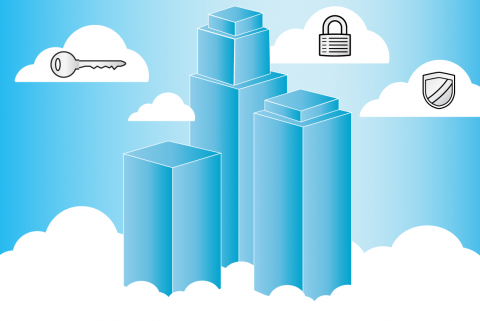A conversation with Red Hat CIO Lee Congdon about cloud-enabled software and infrastructure.
THE ENTERPRISERS PROJECT (TEP): How are you bringing public and private clouds together at Red Hat?

CONGDON: Red Hat is working to provide open hybrid cloud solutions for our customers, and inside Red Hat IT we’re also working hard to be Customer One for a lot of those offerings. As a consequence, we’re going to deploy these solutions in our data centers and with cloud partners. Nearly 70 percent of our applications now run cloud-based. Many of those are software as a service applications. We are working now to migrate our internal applications and extend and augment them by rewriting our corporate services for cloud deployment.
Examples of services consumed by our applications are “Get a subscription, get an entitlement, get information about a product.” We’re rewriting these services to be cloud-enabled in an open hybrid cloud environment. We expect to bring some of these corporate services online later this year. We are very close to achieving our goal of being 70 percent cloud based, and I expect to exceed that percentage.
TEP: What does it mean for those corporate services to be cloud-enabled? Is it just that they use the capacity of the cloud?
CONGDON: That’s part of it, but they also need to be revised and constructed to run simultaneously in multiple data centers, some of which are inside and some of which are outside our internal network. Instead of being resident within our data center with maybe a backup in that data center or in another location, which is a classic model, you write the services so that they are distributed across multiple data centers. The resulting applications are more resilient and scalable as a consequence.
TEP: What other dimensions have been important to think about as you’ve cloud-enabled your applications?
CONGDON: Another thing to think about is changing vendor relationships. Today many companies have vendor partners in the data center that provide processor, compute, storage, power, telecom and other resources, but typically you’re responsible for pulling all those together and making them work to deliver an application. When you buy cloud services, what you’re buying from the vendor is a cloud solution, for example virtual infrastructure or remote access to an application, so you have a different relationship with your vendors, and potentially different vendors as well.
TEP: There seems to be a lot of anxiety about the security of hybrid cloud. Is that justified?
CONGDON: Hybrid cloud is a different environment, so of course you need to rethink your security model. In the traditional model you put up firewalls and ran your applications behind those firewalls and used them to prevent people from getting into your network. When you’re in the cloud environment, your applications may be available across the Internet, and so you need to think about how you’re going to make them available securely. My advice is to learn best practices, understand the capabilities of your vendor partners, rigorously test and invest in information security, and of course be prepared to respond should problems occur.
TEP: To pick up on that Customer One theme, you mentioned that you’ve approaching your goal of 70 percent cloud based applications. How are your internal developers responding to that shift?
CONGDON: We’ve been using a hybrid cloud mix for a number of years and so many of our developers and operations staff are already familiar with the challenges that occur in an environment where you’ve got some applications running inside the data center and some applications running externally. Our developers appear to be strongly buying into our strategy and embracing it. Equally important, so is our production team, which we call IT Enablement.
Historically, many of the applications that we developed internally ran within the walls of our data center, and so an important enabling step is to make the enterprise services I mentioned available in the cloud, but we don’t think that’s going to be a big change for the team. They’re still going to access things using Red Hat product technology, evolved for the new environment. But at many companies it will be a significant shift, and so you need to think about how your teams are going to adapt.
ALSO READ
- Three simple ways to make the cloud work for you
- Five lessons for taking your enterprise to the cloud
- Don't wait: Why CIOs need to train IT for the cloud now
Lee Congdon is responsible for Red Hat’s global information systems, including the technology strategy, enterprise architecture, information technology governance, solutions delivery, and systems operations supporting the company. His role includes enabling Red Hat’s business through services, such as knowledge management, technology innovation, technology-enabled collaboration, and process improvement. Congdon has more than 25 years of experience as an IT leader.




